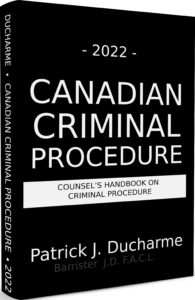 |
| Patrick Ducharme |
Either a Provincial Court Judge or a Judge of a Superior Court may issue a warrant in writing authorizing a peace officer to use any device or investigative technique or procedure or do anything described in the warrant that would, if not authorized, constitute an unreasonable search or seizure in respect of a person or person’s property, if the Judge is satisfied by information on oath in writing that there are reasonable grounds to believe that in an offence against the Code or any other Act of Parliament has been or will be committed, and, that information concerning the events will be obtained through the use of the technique, procedure or device.
Continue reading “General Warrants 487.01”



